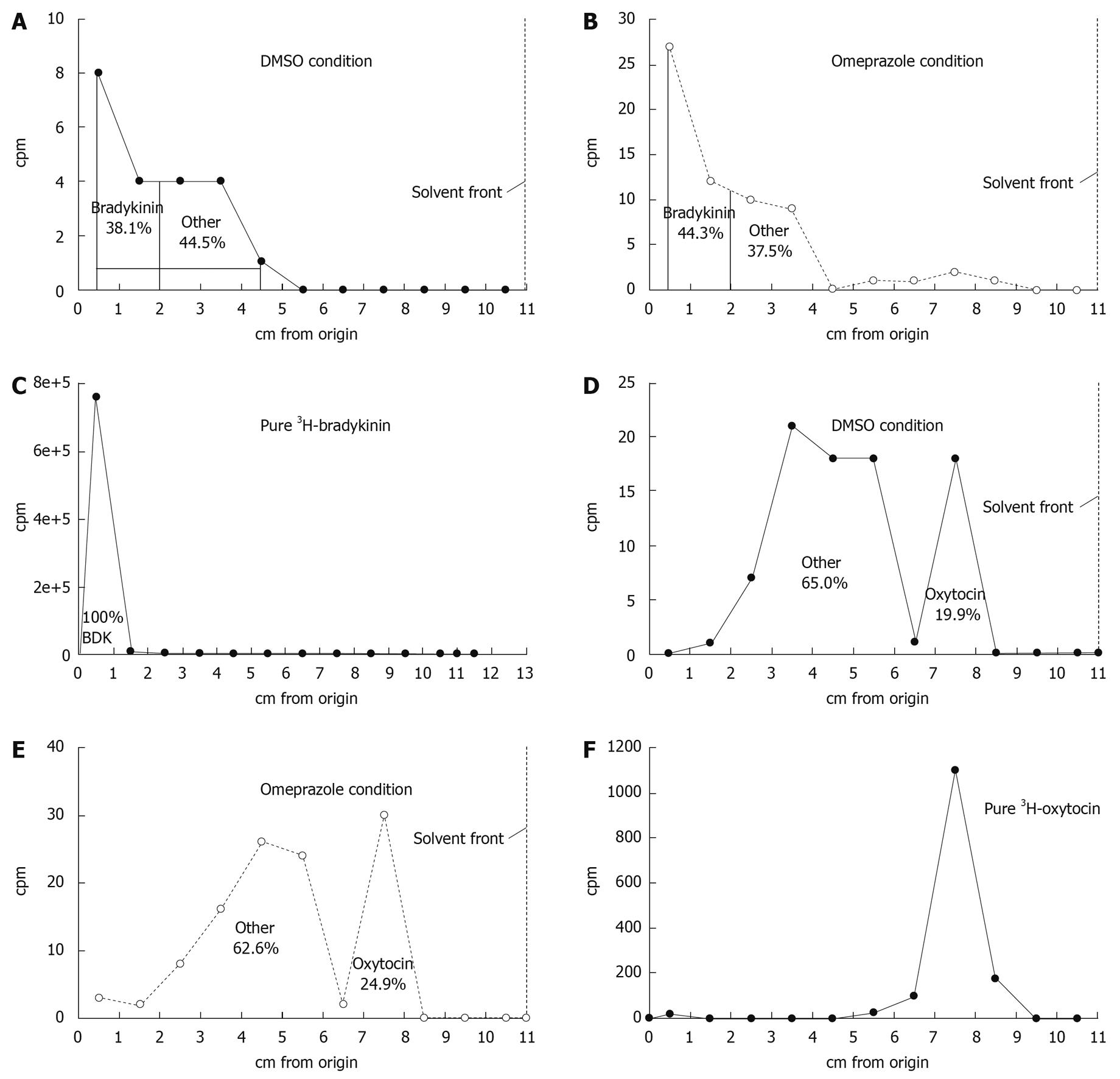Copyright
©2010 Baishideng.
World J Gastroenterol. Mar 7, 2010; 16(9): 1097-1103
Published online Mar 7, 2010. doi: 10.3748/wjg.v16.i9.1097
Published online Mar 7, 2010. doi: 10.3748/wjg.v16.i9.1097
Figure 4 Thin-layer chromatography analysis of 3H crossing the tissue from selected 3H-bradykinin and 3H-oxytocin flux experiments.
The radiochromatograms shown are representative of the total radioactivity present in the serosal fluid compartment at the end of a 180 min flux period from the DMSO (A, D) and omeprazole (B, E) conditions. There are no obvious differences in the proportion of 3H-peptide and 3H-metabolites in either condition. The chromatographic profiles of pure 3H-bradykinin (C) and pure 3H-oxytocin (F) are also shown. 1 cm strips of the chromatogram were cut from the origin to the solvent front. Each strip was counted in a scintillation counter to determine the cpm. The location of 3H-bradykinin or 3H-oxytocin on the chromatogram was detected by its blocking of fluorescence at the origin under a short-wave UV lamp. All radiochromatograms were run in an isopropanol/water/NH4OH (120:30:1) solvent system on silica gel 60 plates with a 254 fluorescent indicator.
- Citation: Gabello M, Valenzano MC, Zurbach EP, Mullin JM. Omeprazole induces gastric transmucosal permeability to the peptide bradykinin. World J Gastroenterol 2010; 16(9): 1097-1103
- URL: https://www.wjgnet.com/1007-9327/full/v16/i9/1097.htm
- DOI: https://dx.doi.org/10.3748/wjg.v16.i9.1097









